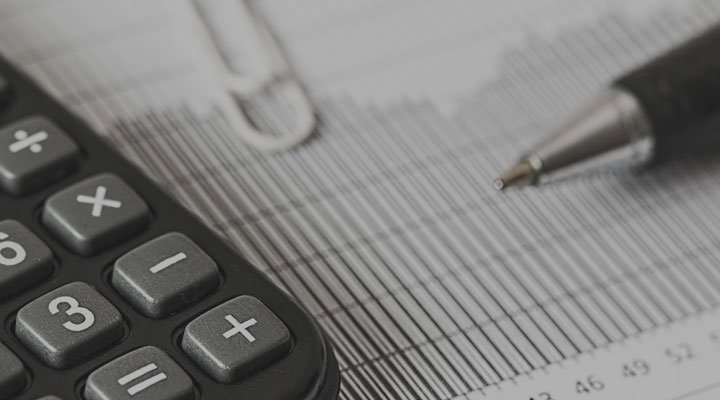UK income tax rates and tax brackets explained
As the quote famously goes: “Nothing can be said to be certain except death and taxes.” While many of us begrudgingly accept this as truth, understanding tax allowances, tax rates and tax brackets is a little more complex. On this page, we explain what you need to know about income tax rates for 2025/26, how personal allowance works and the different tax thresholds.
Personal allowance: You only pay tax on income which is over your personal allowance amount
Tax relief: You might be eligible to claim tax relief and/or tax allowances, depending on your circumstances
Progressive taxation: The UK uses a progressive taxation system which applies a higher rate of tax to those who earn more
What are income tax rates?
In the UK, income tax is the percentage the government imposes on income generated by businesses or individuals. Taxpayers must file an annual income tax return (if you’re employed, your employer will do this for you) to determine the tax band you fall into and how much tax you’ll need to pay.
Income tax is used to fund public services such as the NHS and education, as well as improving things like roads and housing.
How does the personal allowance work?
UK taxpayers each have a personal allowance, which is the amount you can earn before you start paying income tax. When you earn more than your personal allowance, you pay tax at your applicable income tax rate on the amount you earn above the personal allowance threshold.
The standard tax-free personal allowance is £12,570 for the 2025/26 tax year. This is the amount you typically won’t pay tax on. However, if you earn over £100,000 per annum, your personal allowance reduces by £1 for every £2 you earn. This means that if you earn £125,140, you’ll pay income tax on everything you earn and you won’t be eligible for a tax-free personal allowance.
How much is the 2025 standard deduction?
The standard deduction, also known as personal allowance, is £12,570 for the 2025/26 tax year in the UK. This amount may differ if you claim an allowance and will be less if you earn over a certain amount.
What are the UK tax brackets and bands?
You’ll find the UK tax rates for 2025/26 in the tables below. The first table shows the current tax bands for people living in England, Wales and Northern Ireland, and the second table shows the tax brackets for Scotland, which are calculated slightly differently.
UK income tax rates and tax brackets explained
Tax Band | Taxable Income in England, Wales and NI | Tax Rate |
|---|---|---|
Personal allowance | £0 - £12,570 | 0% |
Basic rate | £12,571 - £50,270 | 20% |
Higher rate | £50,271 - £125,140 | 40% |
Additional rate | Over £125,140 | 45% |
Tax Band | Taxable Income in Scotland | Tax rate |
|---|---|---|
Personal allowance | £0 - £12,570 | 0% |
Starter rate | £12,571 - £14,876 | 19% |
Basic rate | £14,877 - £26,561 | 20% |
Intermediate rate | £26,562 - £43,662 | 21% |
Higher rate | £43,663 - £75,000 | 42% |
Advanced rate | £75,001 - £125,140 | 45% |
Top rate | Above £125,140 | 48% |
How to calculate your taxable income
You can work out your taxable income by following the three stages set out below:
1. Add together all your taxable income
Add together all of your earned income from any source, such as self-employment, freelance work, pensions, rental income and state benefits. Deduct your personal allowance (£12,570 for the 2025/26 tax year).
DO NOT factor in any income from savings and investments, as these come into play a little later.
The total figure is your non-savings income, and is the amount you have to pay tax on. The first £37,700 (£50,270 minus the personal allowance of £12,570) is subject to the 20% basic tax rate. Anything over this amount is taxed at 40%, and anything over £150,000 is taxed at 45%.
2. Apply any deductions
When you have your total amount of taxable income, you then need to apply any relevant deductions. Tax relief comes in a variety of forms, including pension tax relief and gift tax, so it’s important that you check your eligibility for tax relief before you continue.
Another form of relief you may be eligible for is known as an allowance. In addition to any tax relief relevant to you as set out above, you may be able to claim one of the following allowances:
3. Non-savings income
The figure you arrive at after the above calculations is the non-savings part of your income that you’ll pay tax on. To find out more about the tax you may need to pay on savings, read our tax on savings accounts guide.
What do the tax thresholds mean?
Every tax bracket in the UK has a tax threshold, which is the upper limit you can earn each year in that tax bracket. Your tax threshold is made up of your personal allowance, income from work, and income from any other source, such as the interest you might earn on savings accounts (more on that below).
If you earn £12,570 a year or less, you won’t pay any income tax. The next tax threshold is for basic rate taxpayers, who pay 20% tax on an income of £12,571 to £37,700 (in most cases this will be £12,571 to £50,270 if you’re entitled to the full personal allowance).
If you earn more than this amount, you’ll pay the higher rate of 40% tax on anything you earn between £37,701 (£50,271) and £125,140. Once your income is more than this, you’ll pay the additional tax rate of 45% on anything you earn over that amount.
Income tax and savings
It’s worth noting that your income tax band can also affect how much tax you’ll pay on your savings income. Although the personal savings allowance (PSA) means most people won’t pay tax on the interest they earn from a savings account, if you’re a higher earner, or you have a substantial amount of savings you may be liable to a tax charge.
The PSA allows basic rate taxpayers to earn up to £1,000 in tax-free interest, while higher rate taxpayers can receive up to £500 in interest without paying tax. Any interest that exceeds your PSA is taxed at your usual rate of income tax, so 20% for basic rate taxpayers and 40% for higher rate taxpayers. Additional rate taxpayers do not receive a PSA, meaning that all of the interest they earn on their savings is taxed at 45%.
The information provided here is for informational and educational purposes only and does not constitute financial advice. Please consult with a licensed financial adviser or professional before making any financial decisions. Your financial situation is unique, and the information provided may not be suitable for your specific circumstances. We are not liable for any financial decisions or actions you take based on this information.
Open a savings account with Raisin UK
If you already have a current account and are looking to save, Raisin UK gives you access to a range of competitive savings accounts from our UK partner banks.
Opening savings accounts through our online marketplace is completely free, and you can open different accounts with just a few clicks, including fixed rate bonds, notice accounts and easy access savings accounts.
Save smarter with the Raisin UK newsletter!
What’s in it for me?
- Receive exclusive updates on market-leading rates
- Ensure you never miss a bonus offer
- Keep your finger on the pulse with the latest financial news


